In a traditional Robin Hood story, when the peasants receive money from Robin Hood, it's a precious gift. They need the money to survive. But here the giving to the poor is just a ploy for the "Robin Hood" to get away. The common people -- who seem more middle class than poor -- are greedy. And their avarice gets in our hero's way.
Green Arrow and Speedy next catch up with the "modern Robin Hood" at a drawbridge. Robin Hood leaps across saying "Drawbridges! Ha! A familiar thing with me!" Green Arrow shoots a bolo arrow, an arrow with a rope line, to the other side of the bridge. Robin Hood shoots an arrow at the rope as Green Arrow and Speedy are swinging across, and the two heroes fall into the water. Robin Hood says it's reminds him of how he tricked the Sheriff of Nottingham.
After Green Arrow and Speedy pull themselves out of the water, Green Arrow examines the arrow that cut their rope line. It gives him the clue to solve the case. And he declares that this so-called Robin Hood isn't insane.
Meanwhile outside the Midtown Loan Company, a truck with an archery target made of petty cash drives by. Robin Hood shoots the dollar bills, which distributes the cash to the eager citizens. But Robin Hood thinks to himself that the populous will be so distracted with picking up the $5 bills, they won't notice him stealing the much greater haul inside the loan company. This Robin Hood's distribution of wealth is pragmatic -- not altruistic.
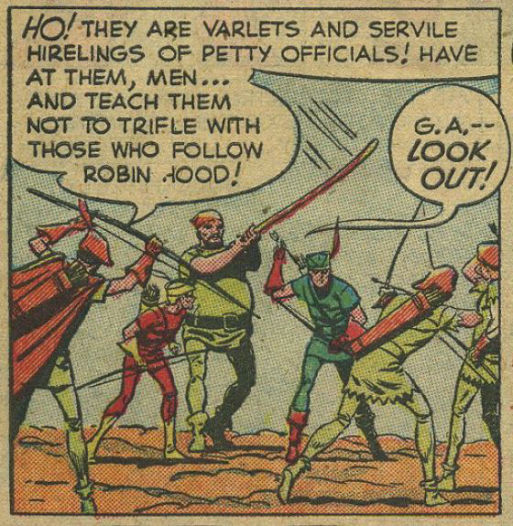
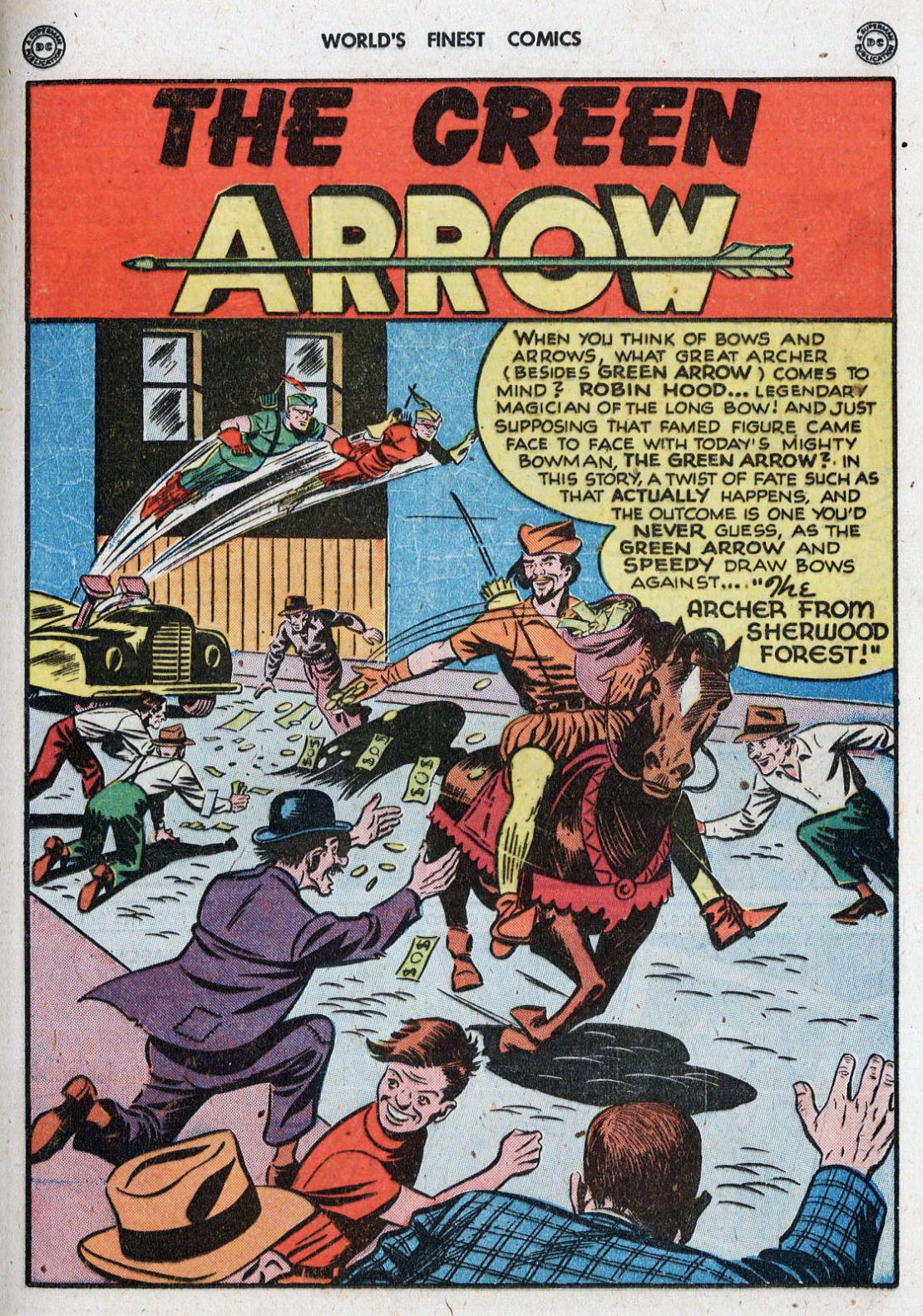
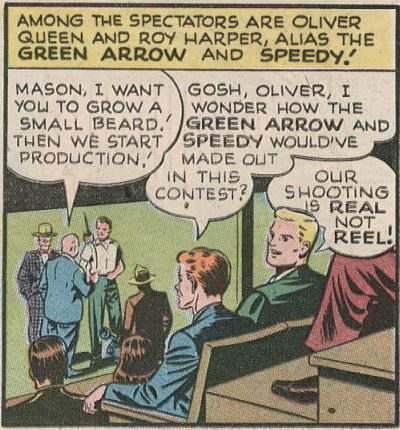
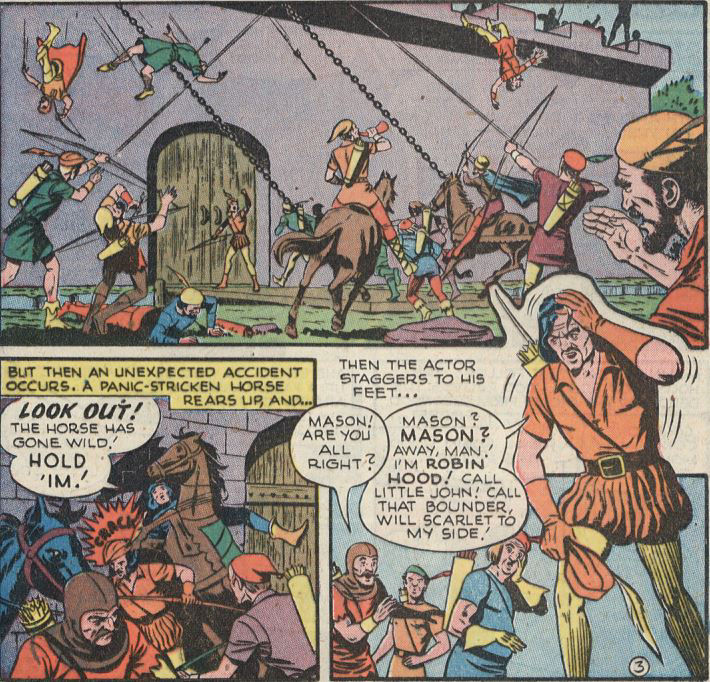
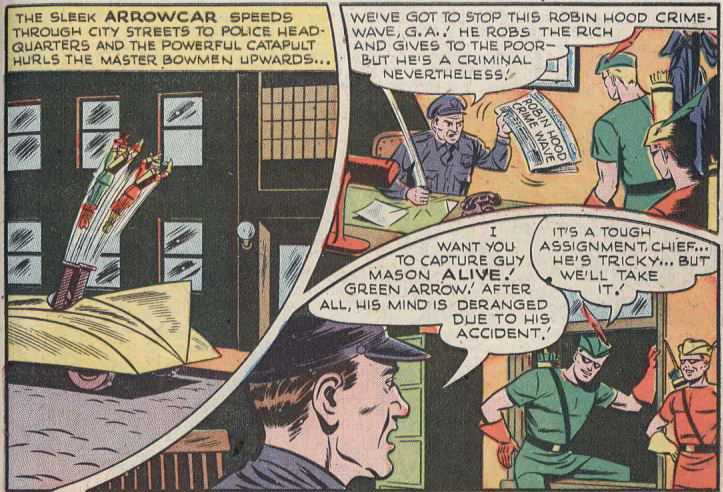
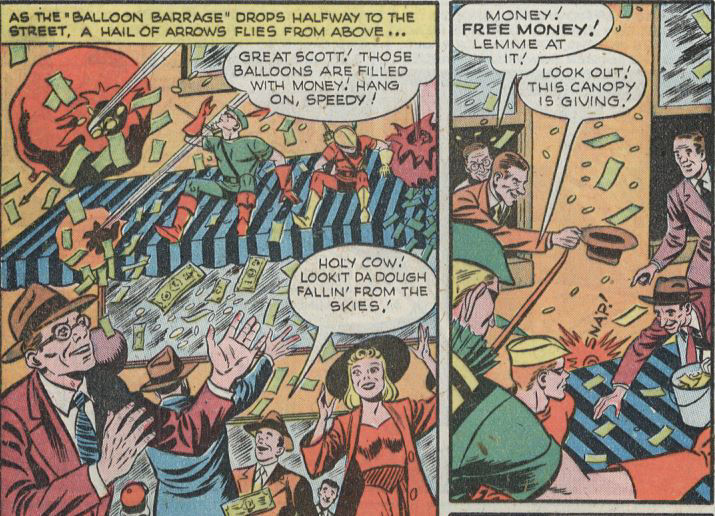
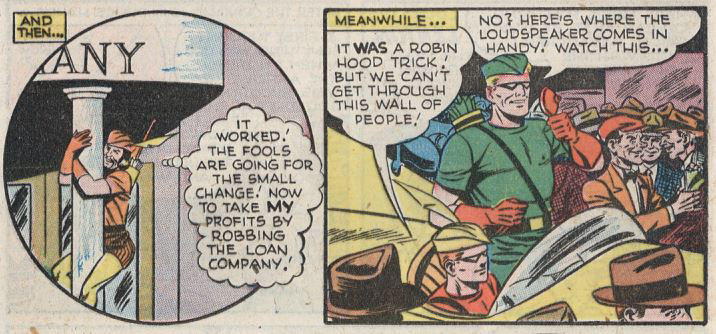
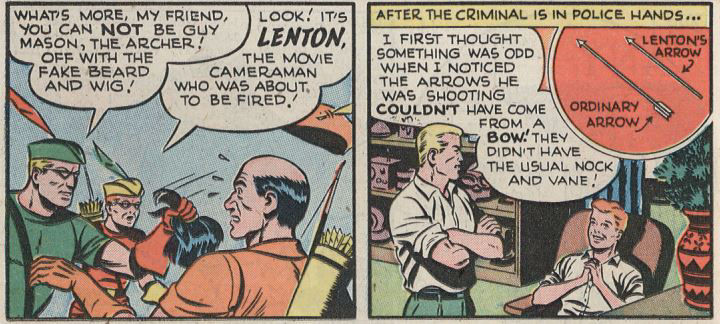
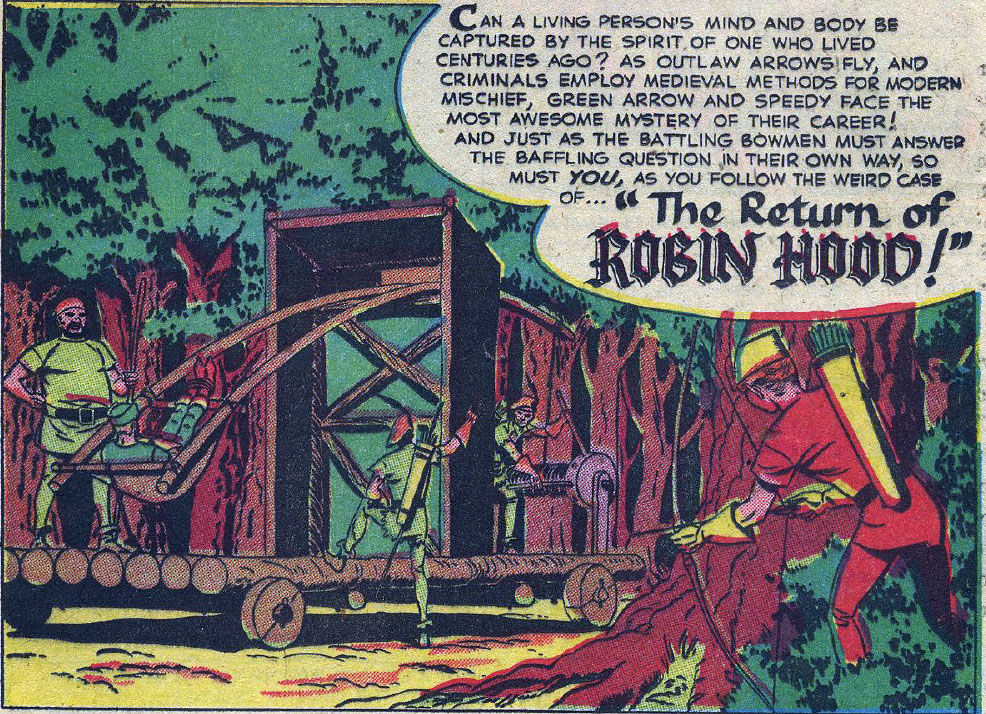
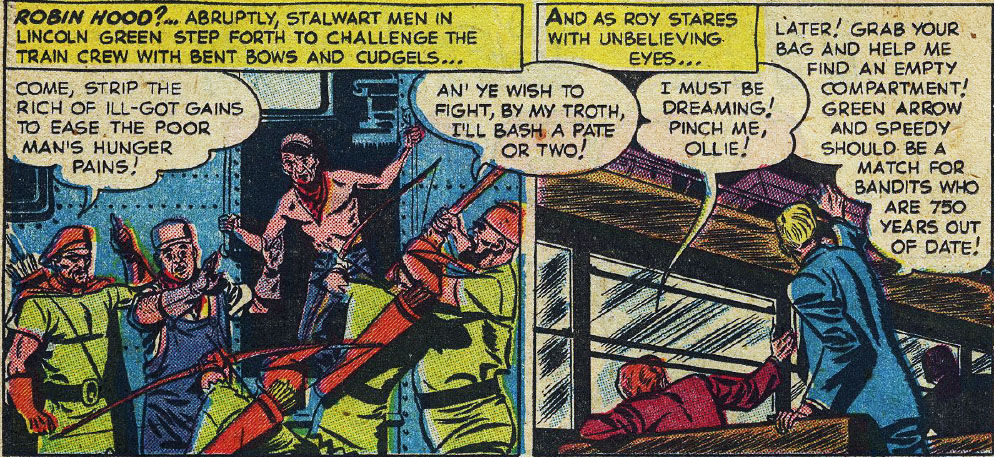
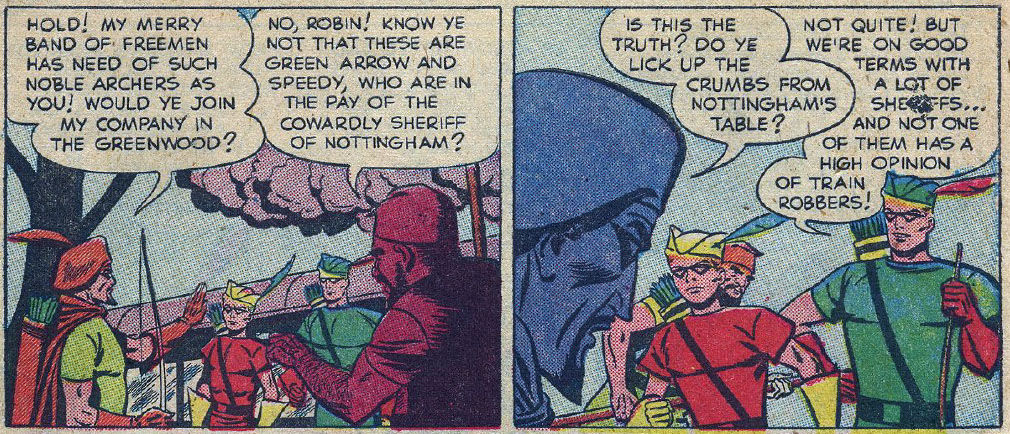
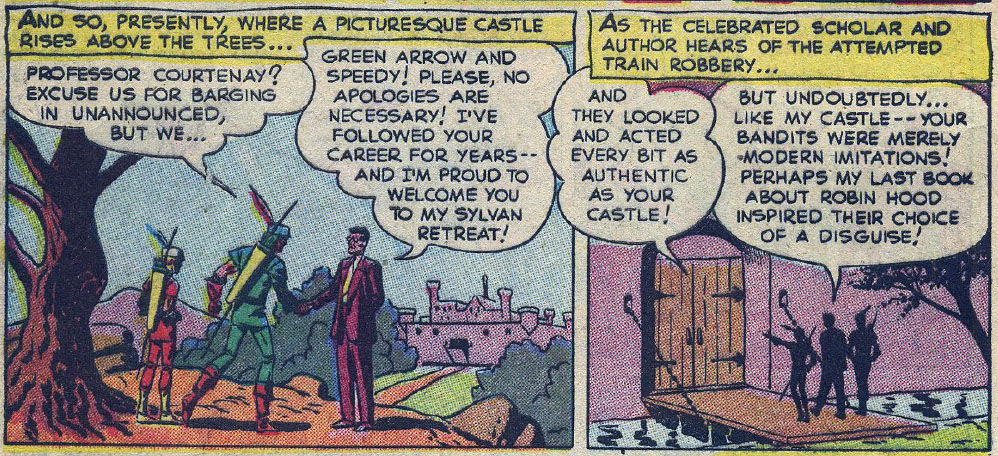
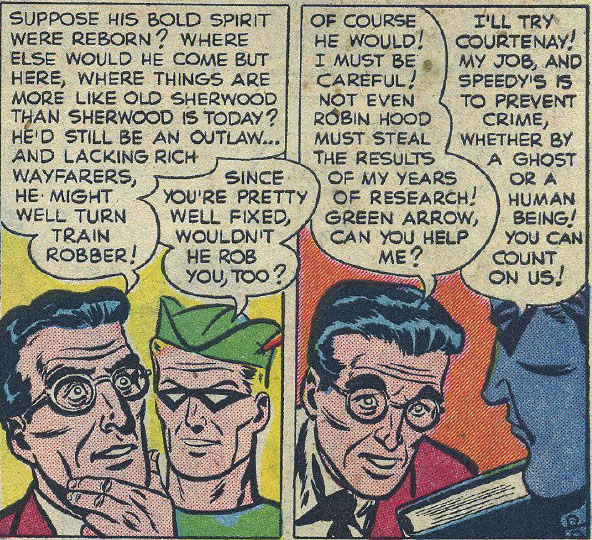
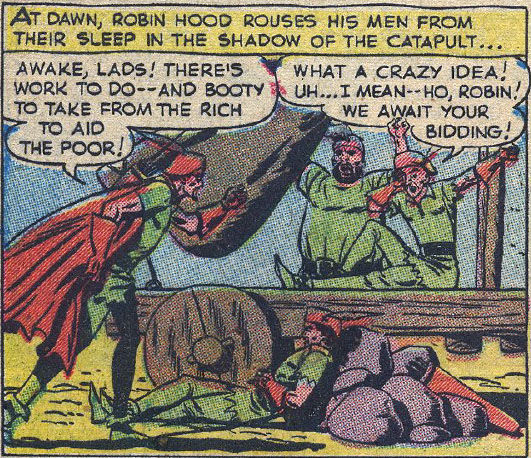
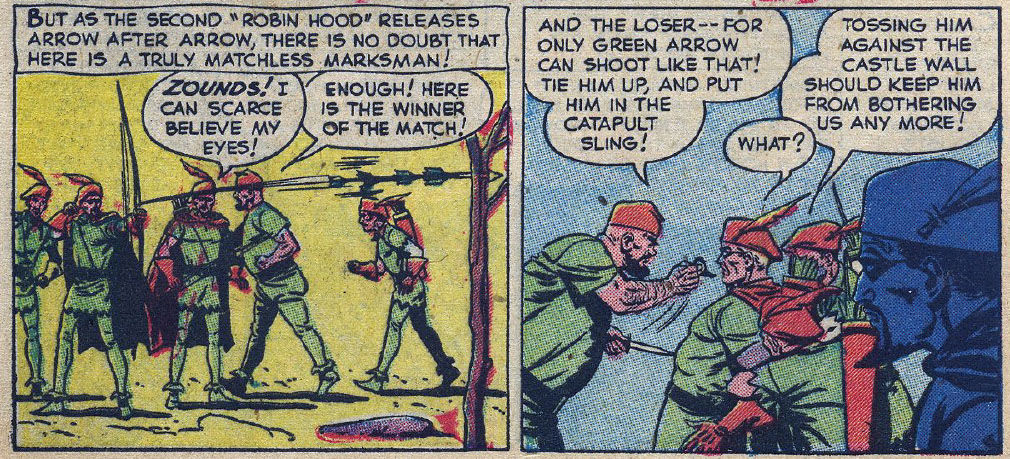
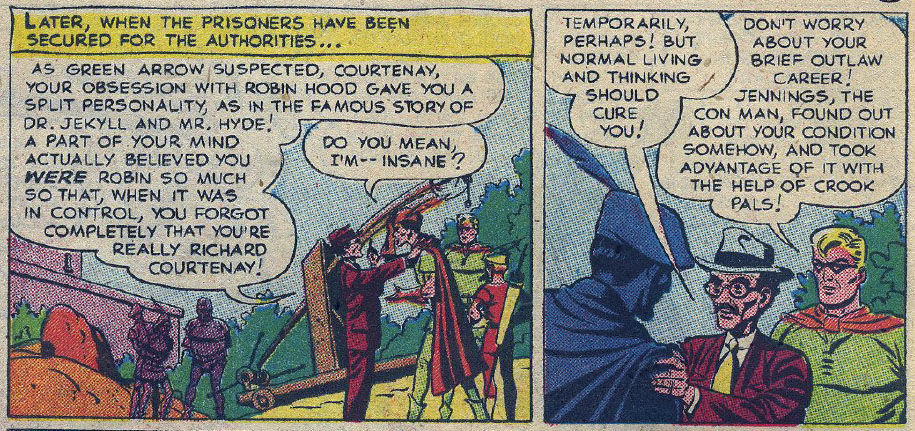
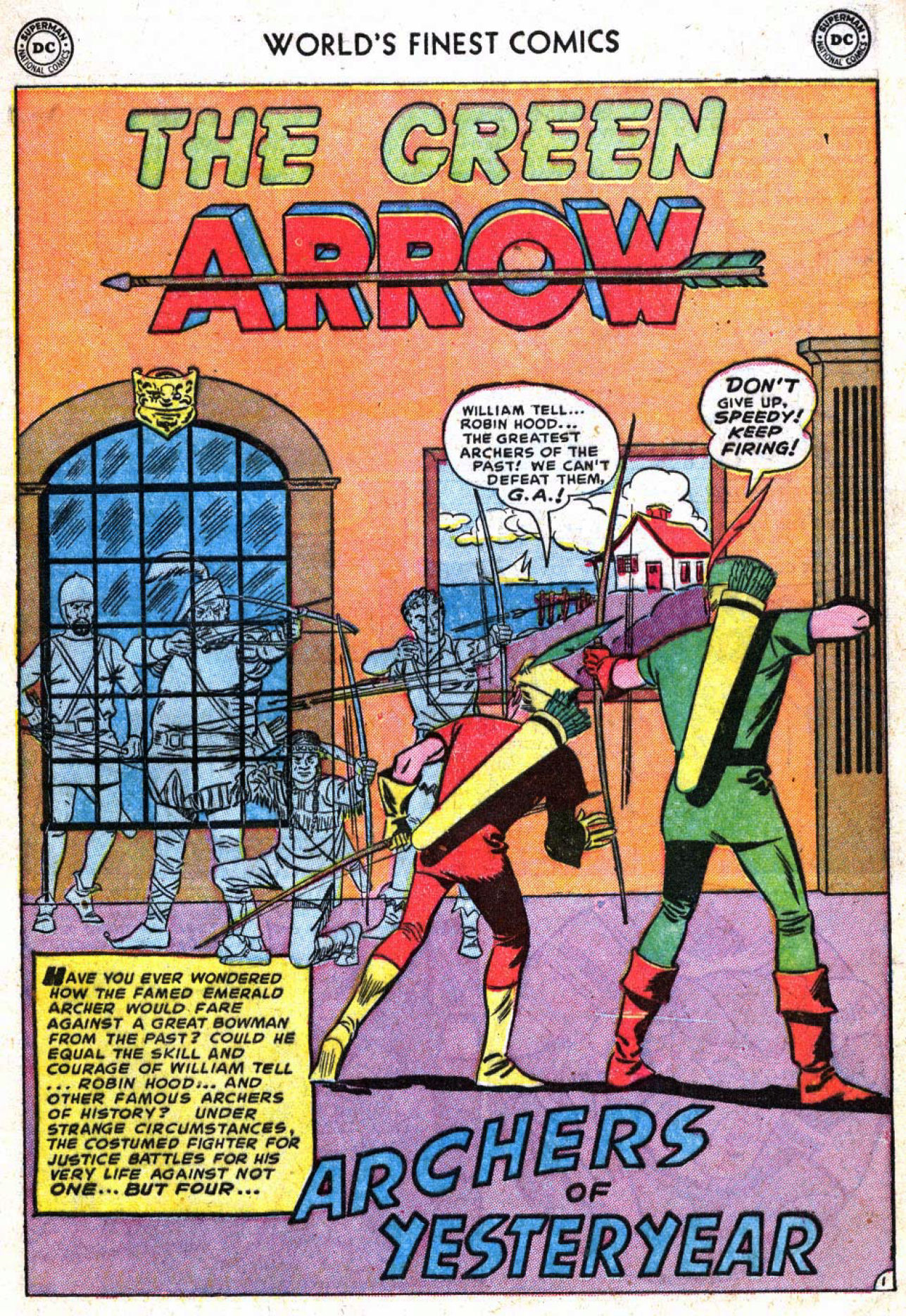
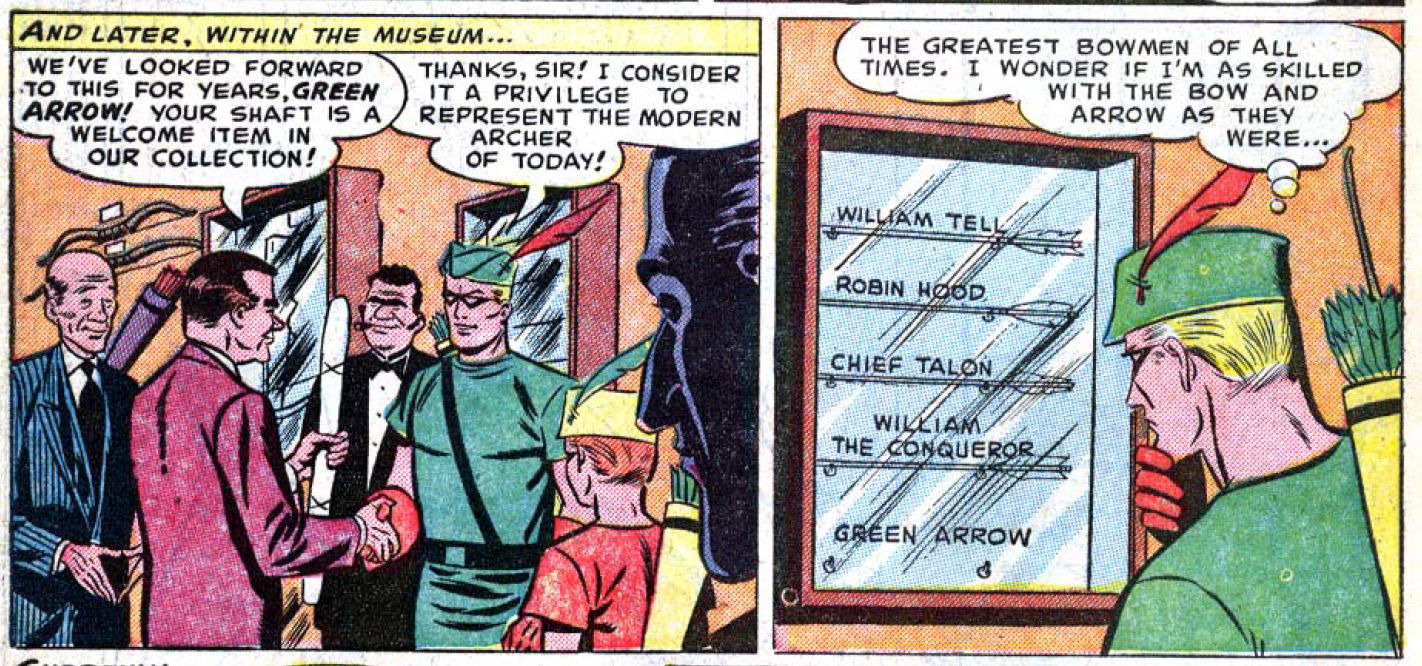
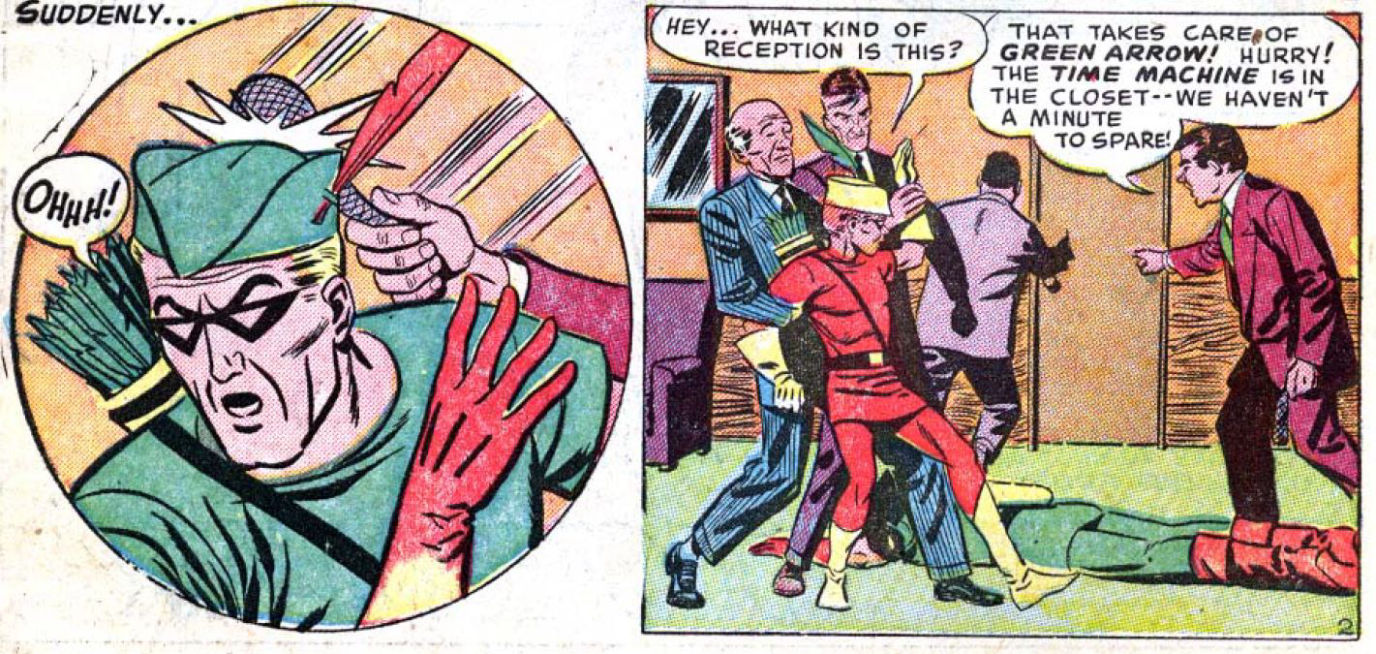
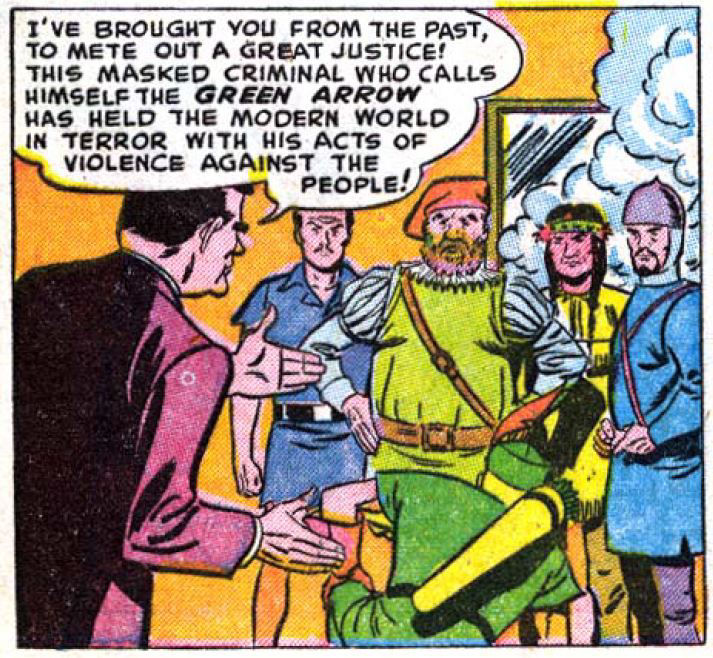
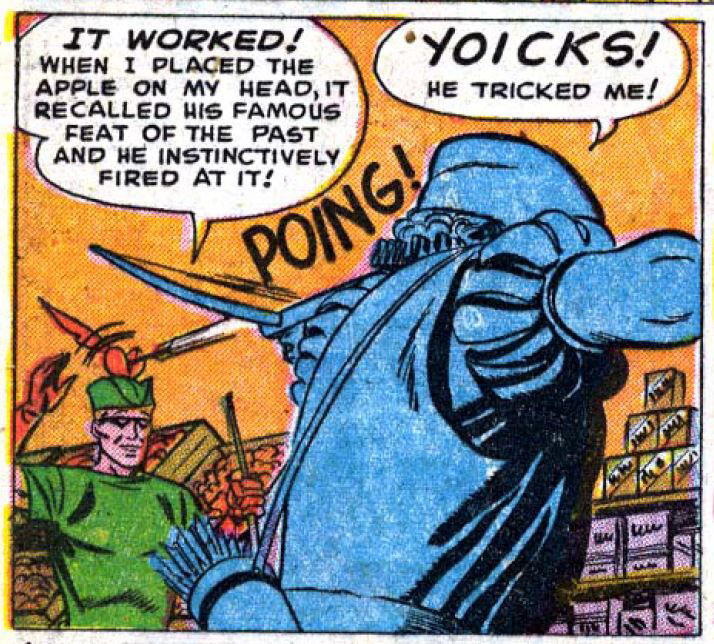
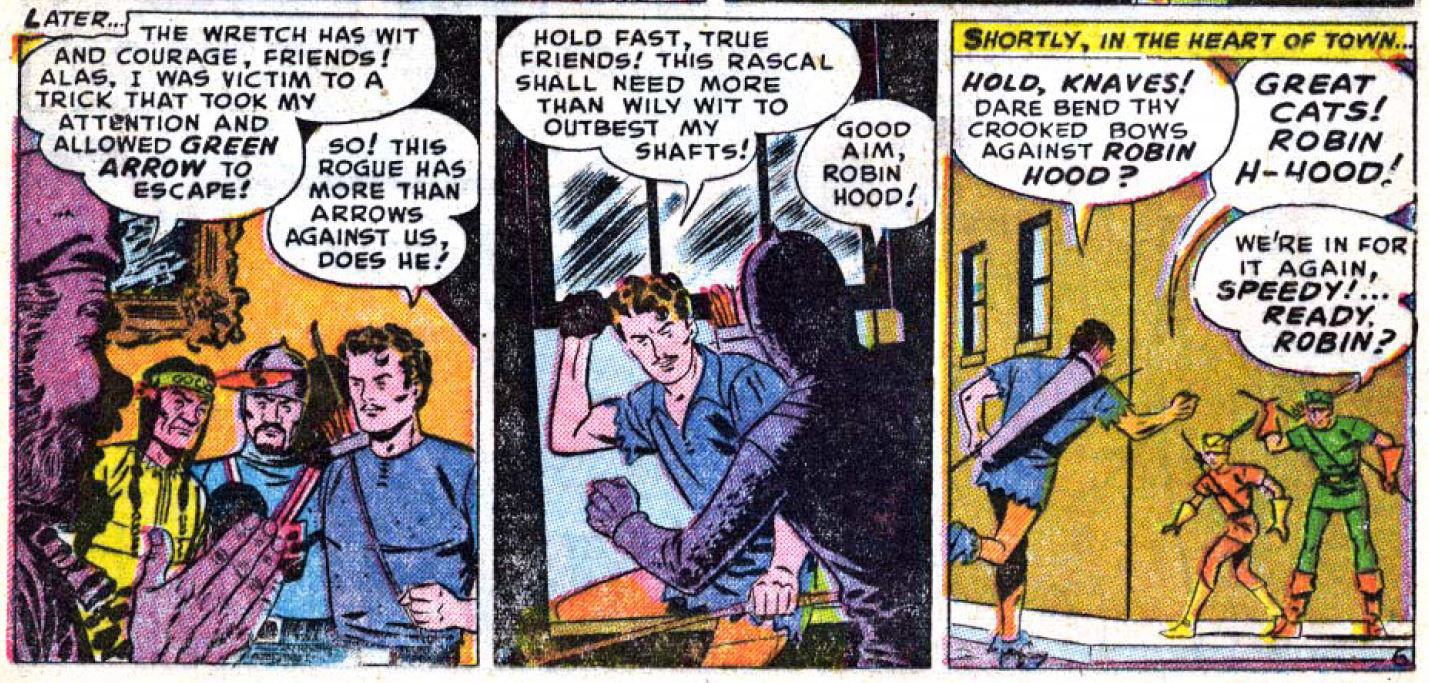
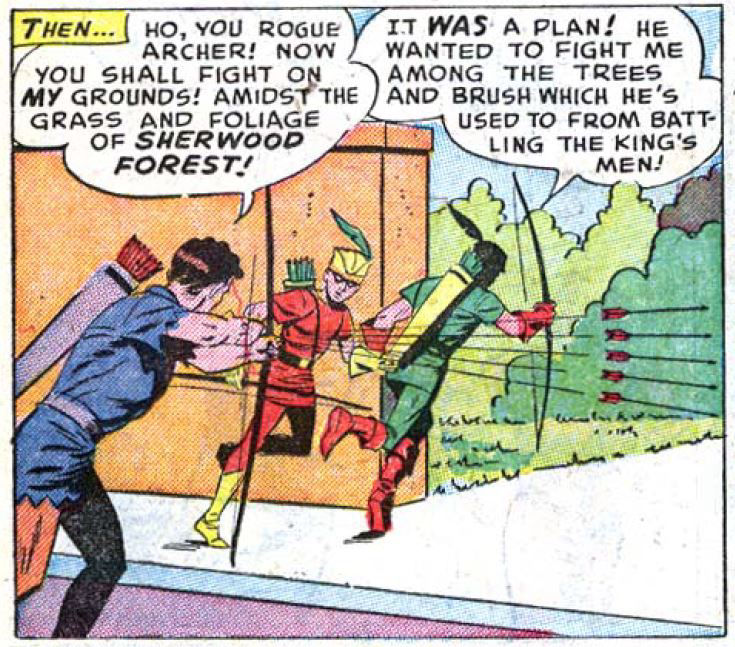
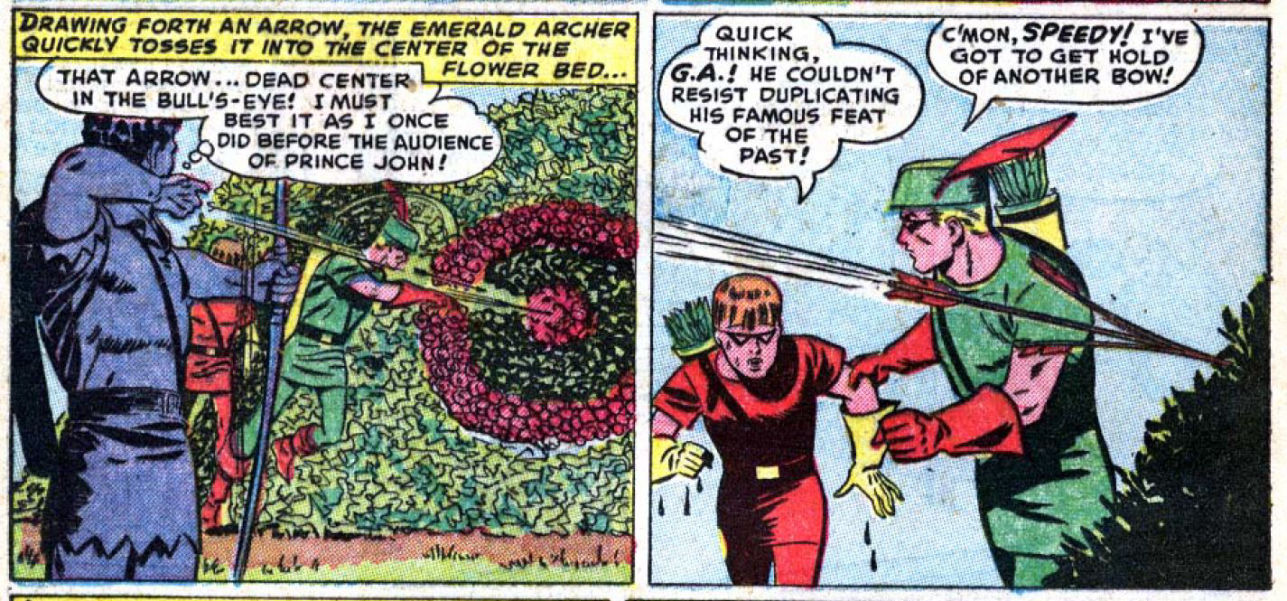
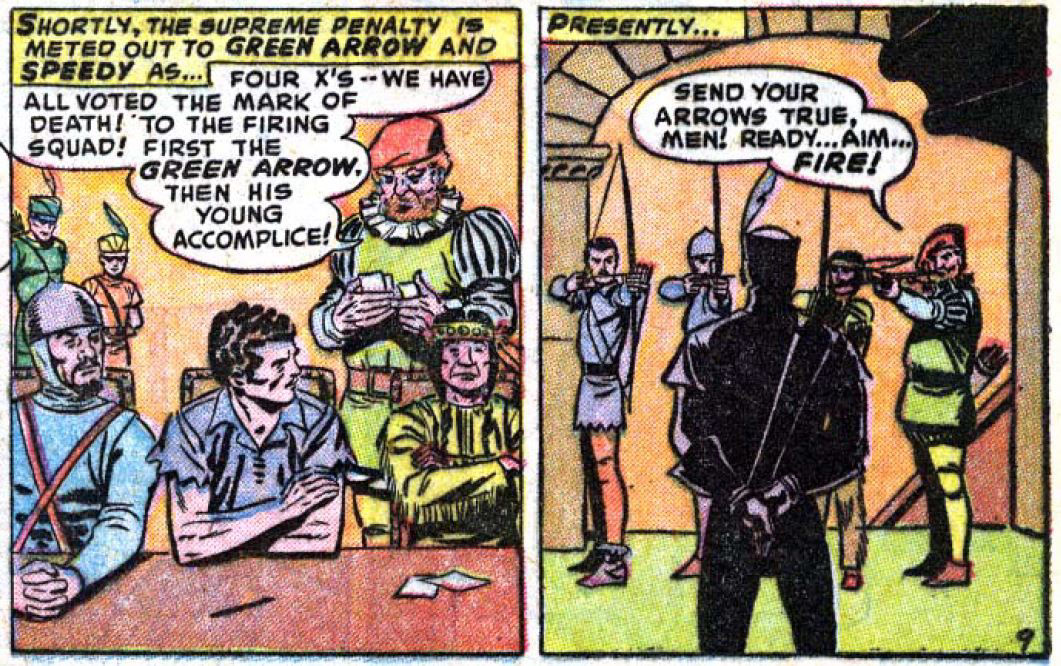
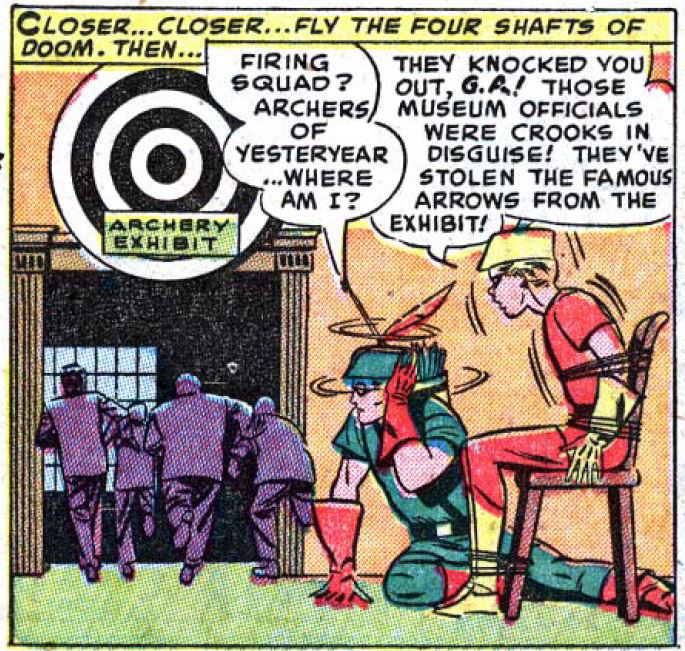
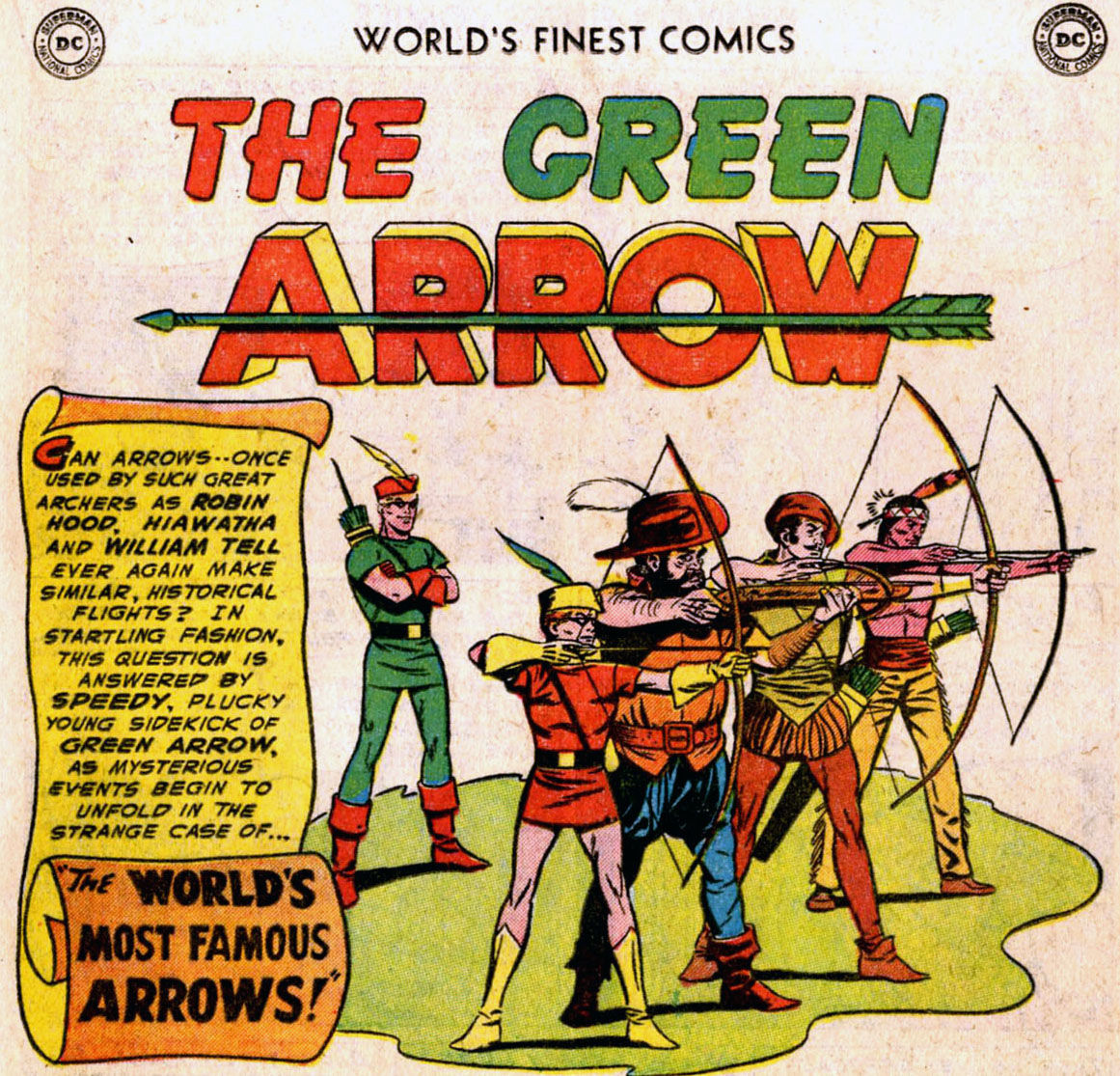
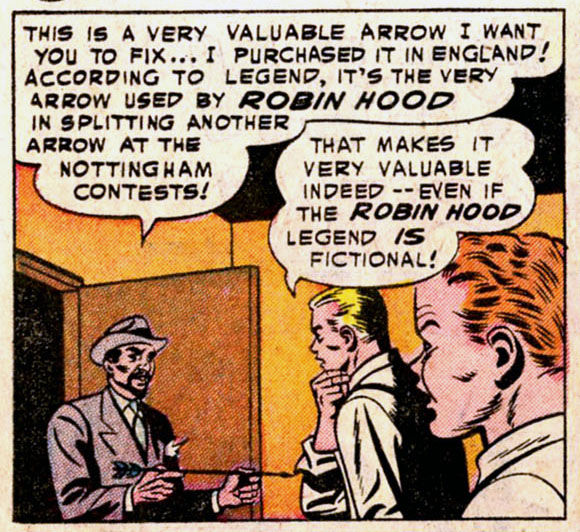
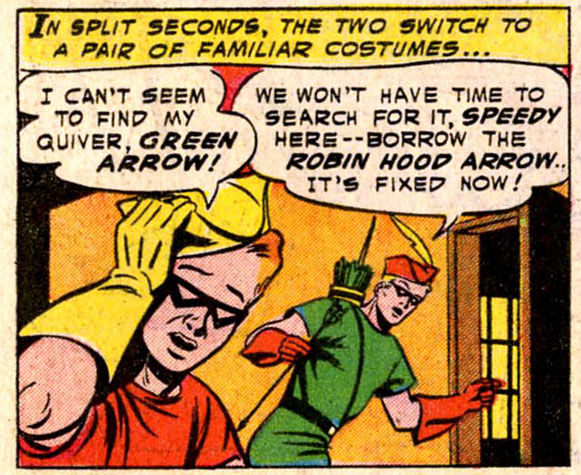
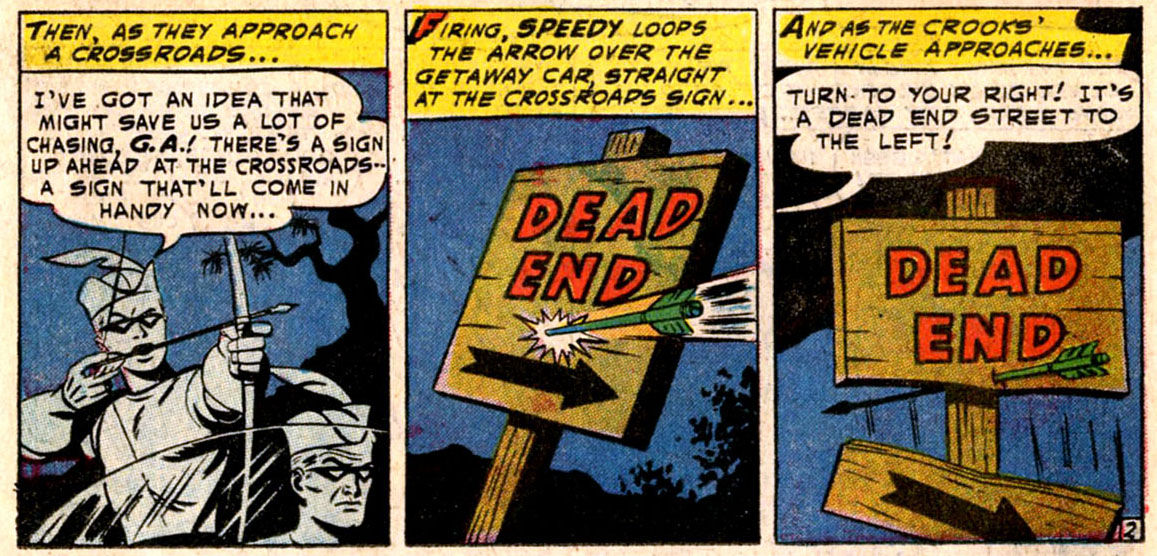
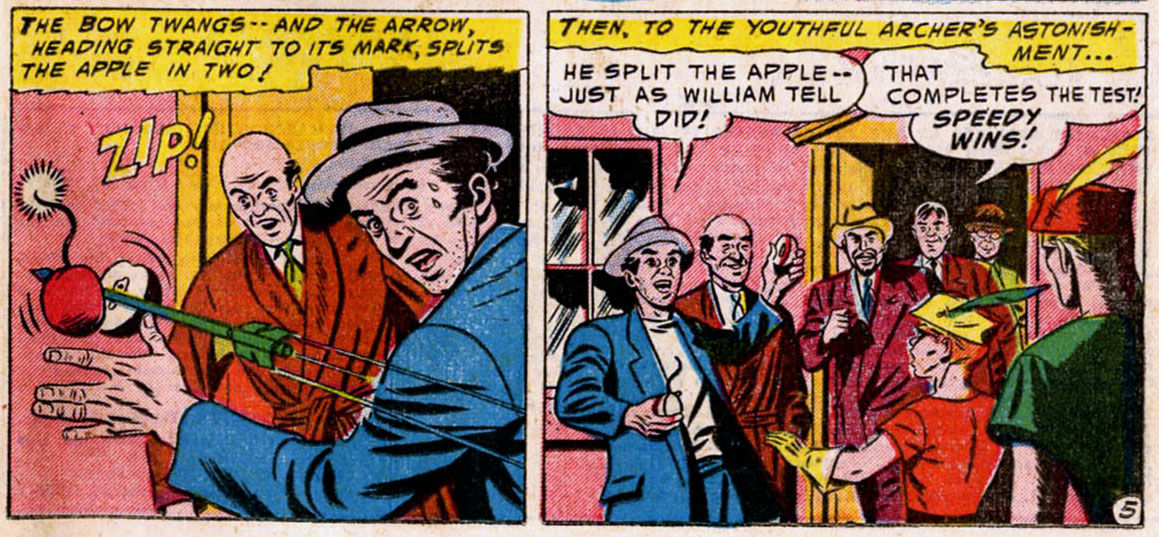
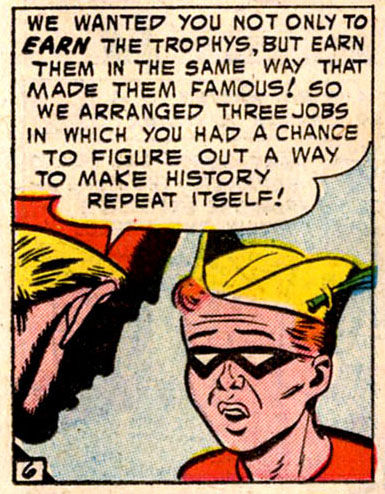
Contact Us